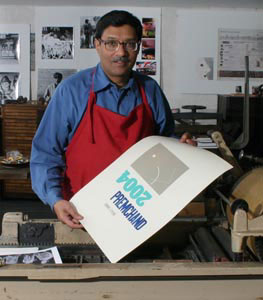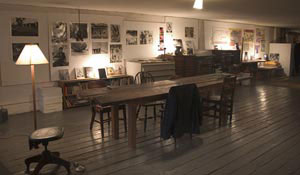Life
Journeys: The Foul Smell Of Gentrification

|
Journeys are about changing landscapes and movement, but when the devotees of Mammon have their way, they are also about gentrification, of building overpriced towers on the rubble of people’s well-loved homes. As real estate prices continue to soar in Manhattan, the artist pioneers who homesteaded fringe neighborhoods decades ago are getting the boot.
Ask Ram Rahman, the noted photojournalist and activist, who has lived in the Fulton Street Fish Market for a quarter century and has grown oblivious to the overpowering smell of fish in the air. Now the historic fish market, which stood there for 180 years, has been packed off to the Bronx and Rahman has been given his marching orders. In 1979 Rahman was just 24 and fresh out of Yale when his classmate George Shakespeare found an ad for a loft space in the Fulton Fish Market itself. The two signed a lease for a space that had been lying vacant for 80 years, on top of floors where fish was sold. It was a completely raw space with just electrical plug outlets and pipes, but no toilets or kitchen – leave alone a door! The two started scrounging around and buying materials bit by bit and building a wall around the bare stairs leading to this fourth floor space. “We found a door outside the public theater at Astor Place one night, and carried it home on our heads. That became our door on the 4th floor,” says Rahman. “While we assembled windows, we had sheets of plywood against the gaping holes, which were the window frames. We used our downstairs neighbor’s bathroom for a month. Sometimes we had French baths in the McDonalds bathroom on Fulton Street.” While teaching design as an adjunct at New York University, Rahman found they were giving away an old Letterpress printing press, which he picked up for free, renting a crane to bring it through the window. George and he did all the building, plumbing and construction every night, while working at their new jobs during the day, and the space evolved by living in it.
“Friends gave us beds, furniture and my friend, artist Susan Hartnett lent me an old tabletop gas stove she had inherited from Yoko Ono. We had those two electrical outlets and miles of extension cords for 6 years, and no heat for 15 years!” Yes, it was a journey to adulthood and the real world. Rahman built the bathroom so it could also be a darkroom for his photography work, and some of his major works like Sahmat’s landmark exhibition “Hum Sab Ayodhya,” were developed here. Rahman, who is the son of the late great dancer Indrani, has an eclectic circle of friends gathered over the years and the loft became an “adda” or hangout for artistic spirits, known and unknown. Aspiring artists always found a bed here and noted writers, artists and film-makers like Salman Rushdie, Amitav Ghosh, Ved Mehta, Arpana Kaur, Raghubir Singh, the Husains, Atul Dodiya and Shyam Benegal all partied at 114 South Street. This was the literary salon in the fish market and the venue of some animated conversations.
For the last two years Rahman fought the powers that be, trying to keep his home that looked out onto the starlit waterfront and the wharves of the Seaport. He lost the final fight and this month Rahman packs his bags and sets off on another journey. |



